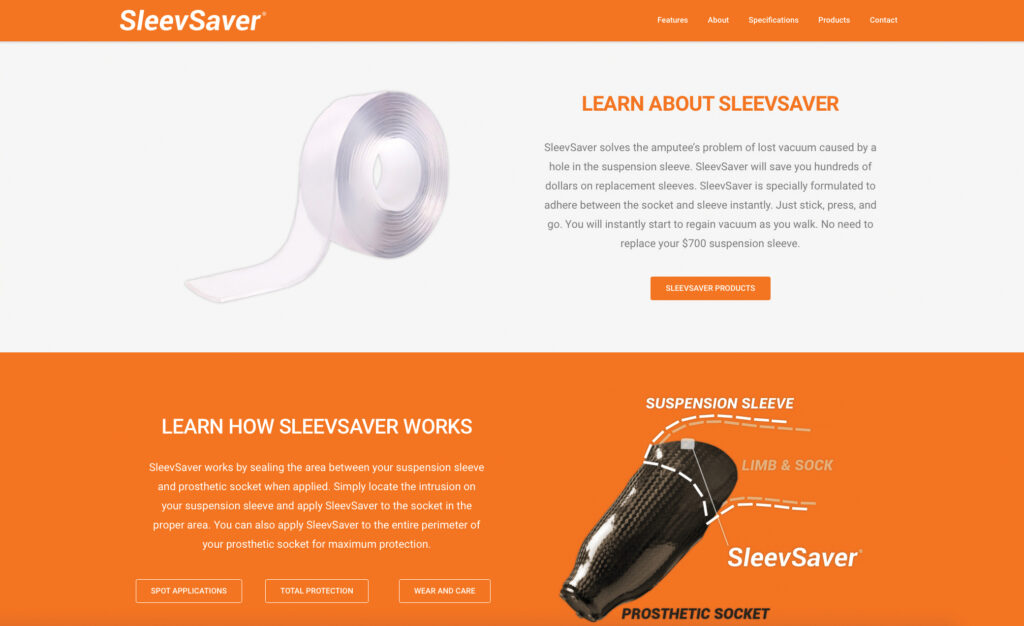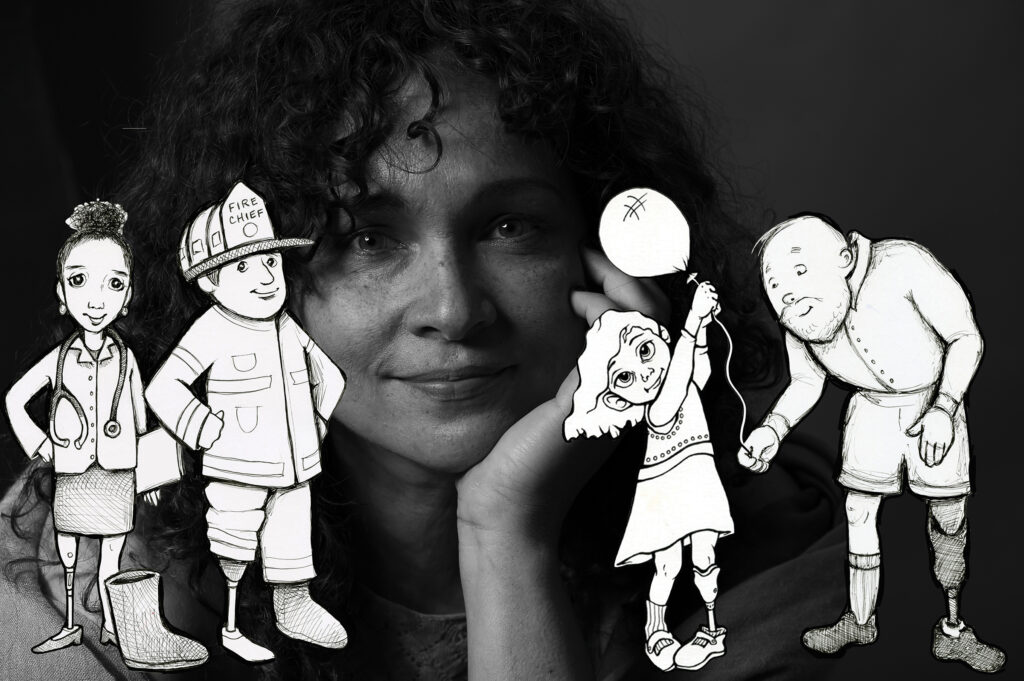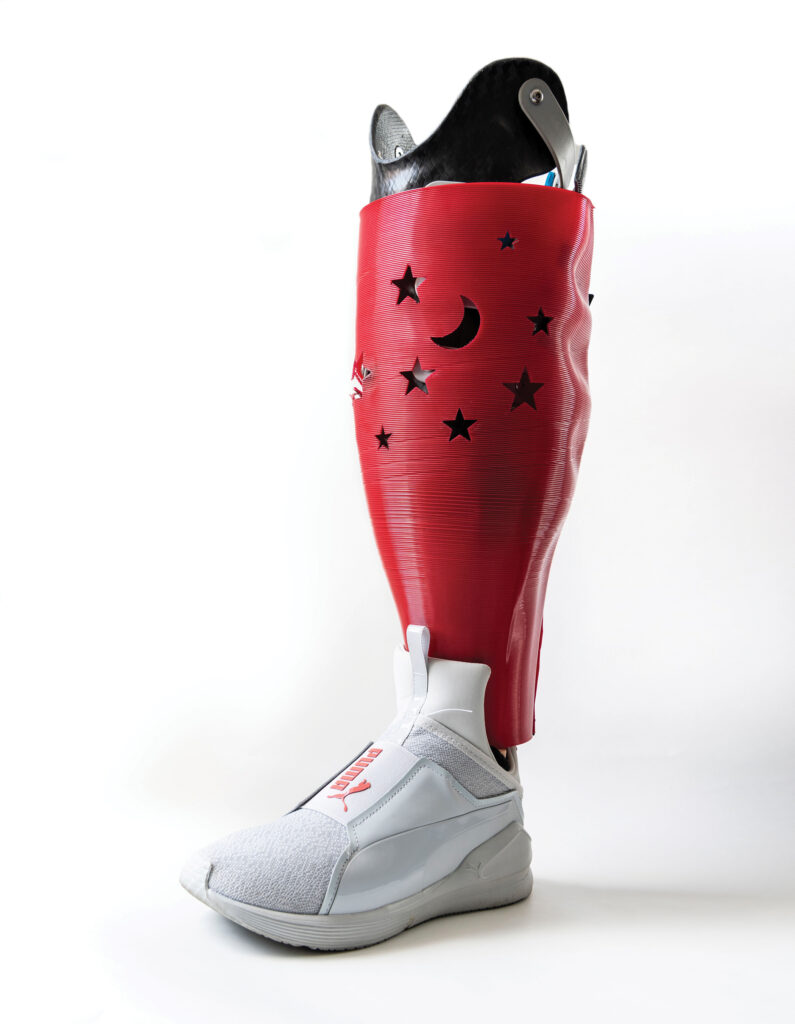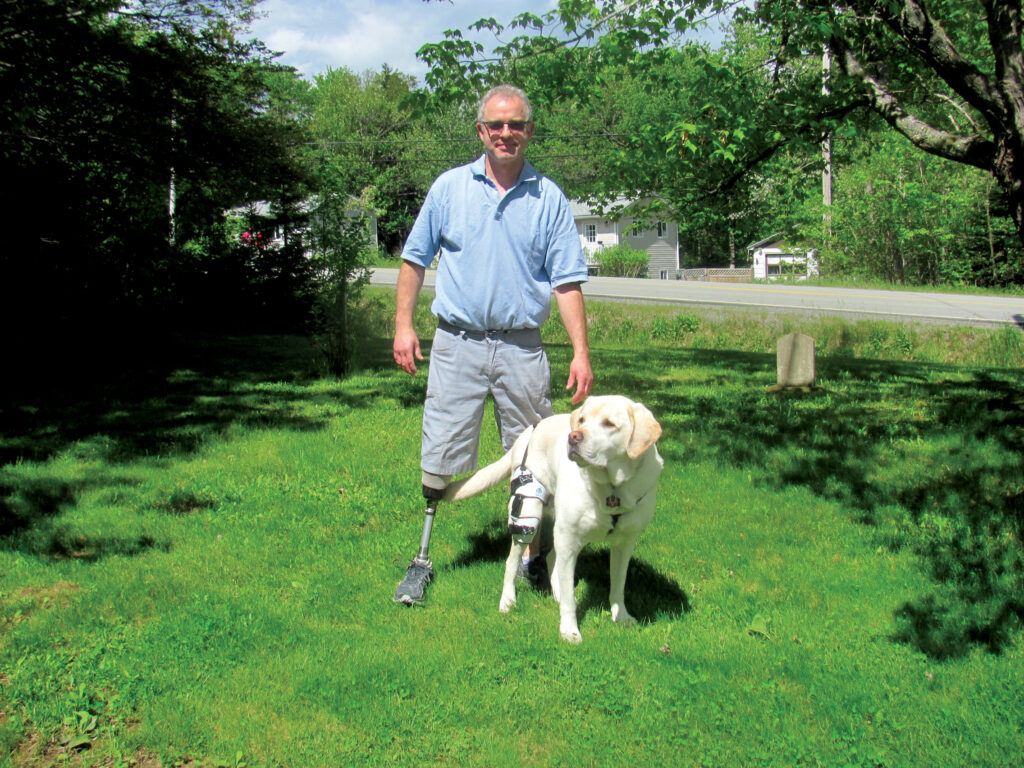By Elizabeth Bokfi
What prompts a person to start a business? According to a Forbes article by Jodie Cook, author, social media expert, and entrepreneur, the seeds of entrepreneurship are sown during childhood. But sometimes it isn’t until adulthood that those seeds germinate, the business idea sprouting from the recognition of an unaddressed need. For the following amputee entrepreneurs, observing an amputation-related need was the ultimate impetus for the business each of them started.
BILL HATTAN
HELPING CUSTOMERS SAVE MONEY

August 9, 2002, was the day Bill Hattan’s life changed forever. While setting up an Intelligent Transportation System highway work zone on I-94 in Detroit, Hattan was struck by a motorist traveling at 80 mph, resulting in a bilateral below-knee amputation.
Today, Hattan uses an elevated vacuum prosthesis in which a pump attached to the socket creates suction to maintain the seal between the residual limb, inner liner, and suspension sleeve.
“Sleeves are the weak link in the whole prosthesis,” explains Hattan. “My displeasure was the [lack of] longevity of the suspension sleeve. There were times I would get a new sleeve and have an intrusion the same day. What really drove me crazy was the tiniest of vacuum loss meant sleeve replacement, which costs between $500 and $700.”
Breaking the seal refers to the loss of adhesion or suction between an amputee’s suspension liner, or the inner silicone liner, and the skin. It can happen from something as simple as sweating too much, or worse and more costly, from acquiring a hole or small tear in the liner. A broken seal was the root of Hattan’s problem.
What began as a search for a solution to his ongoing problem turned into SleevSaver—an adhesion repair product he says can help other amputees dealing with similar challenges. Available in meter-long rolls, the product can be custom cut for a spot repair or cut to fit the socket rim. Being able to seal five intrusions on one sleeve alone saved Hattan $3,500.
“SleevSaver’s primary substrate is polyurethane, which is common in the marketplace,” says Hattan. “What makes SleevSaver unique is the adhesion quality I manufactured into the substrate.”
Hattan prepared a full-scale business plan and launched SleevSaver on August 1, 2019. Now partnered with SPS, Hattan also established a Canadian distributor—East Coast Amputee Products.
“I enjoy reading all of the comments about how SleevSaver has helped so many people and saved them hundreds of dollars,” says Hattan.
The business is on target to introduce five new products by the end of 2020 and Hattan’s goal is to pay it forward by helping children in the limb-loss community.
JENNIFER LATHAM ROBINSON
FOLLOWING HER PASSION

Jennifer Latham Robinson was born with bilateral proximal femoral focal deficiency, a condition in which the upper thigh bone is malformed, resulting in one leg being shorter than the other. Part of Robinson’s treatment plan involved a right above-knee amputation when she was 18 months old.
During childhood and adolescence, the atmosphere around her limb difference had always been a positive one. Flanked by an older brother who taught her drawing and sculpting principles and a mother who handed down her doll-making skills, it’s no surprise that Robinson expresses her limb difference through a variety of art mediums.
“Art has always been my thing,” says Robinson. “In the early ’80s, physical education classes in school were not always inclusive. On those days, I’d sit on the benches and draw. Drawing was my default.”
Robinson writes and illustrates stories that feature characters with limb differences and sells them online.
“I always noticed the lack of characters with limb loss in children’s books,” says Robinson. “I knew that illustrated stories would be a perfect vehicle to mainstream images of people like me.”
Her first book, Just Like Us: A Coloring Book Celebrating Children with Limb Differences, is a coloring and activity book that promotes awareness of all abilities. Then came Leg Braces are Super Cool in 2015, followed by her latest book, Garden Lessons. In 2016, Robinson also created the Outsider Dolls series that rarely include dolls with limb differences.
“Limb difference is only one part of me,” she explains. “It doesn’t drive every creative outlet for me.”
Then, like a tree that’s developed a series of expanding roots, Robinson dipped into cartooning with a limited series for PUSHLiving, an online wheelchair-accessible lifestyle resource. In 2017, she teamed up with her husband David Robinson (an artist, certified orthotic fitter, and anaplastologist) to establish Functional Restorations. Their Durham, North Carolina, company works with orthotics and prosthetics companies fabricating custom silicone devices. Clearly, entrepreneurial blood runs thick in the family.
Robinson believes positive relationships play a role in business success. Her top three personal tips:
- Fill a need. If there is an unmet need for you, it’s probably an unmet need for others.
- Follow your talent and passions. It makes hard work more enjoyable.
- Live by your moral compass. Knowing where you stand is important, especially when it comes to business.
ERICA COLE
GIVING THEM SOMETHING TO STARE AT

Sometimes another person’s discomfort creates discomfort for us. After Erica Cole’s vehicular accident and subsequent trauma-induced left below-knee amputation in 2018, it was how others stared and reacted to her prosthetic limb that she found disturbing. Rather than try and disguise her prosthesis, the University of Iowa chemistry major went on the offensive, taking an in-your-face approach to the stares. Cole created a one-off cover for her prosthesis using a variety of thermoplastic materials and hand painted it to resemble stained glass.
“I made it look like stained glass and lit it up like a disco ball, thinking ‘If you’re going to stare at it, I’ll give you something to stare at,’” says Cole. “There was something in the act of taking ownership of my prosthetic—from transforming it from a medical device to a fashion statement—that made other people more comfortable with my condition. And because they were more comfortable, I was too.”

Following a friend’s suggestion to make and sell covers for other amputees, Cole entered and won an IdeaStorm competition sponsored by the University of Iowa’s John Pappajohn Entrepreneurial Center (JPEC). Vying for a cash prize that can be applied toward business start-up costs, Cole had two minutes to pitch her No Limbits idea to a panel of judges, in front of an audience.
Small business grants coupled with cash prize competition winnings gave Cole enough start-up capital without having to seek investors. Part of her No Limbits start-up money went into the purchase of 3D printers, significantly reducing her manufactur-ing costs. Using client-submitted measurements of their prostheses and sound limbs, Cole creates a 3D model of the cover. The client then chooses from a library of No Limbits cover designs or works with Cole on a custom pattern.
No Limbits is currently working with product testers to test durability and function, and Cole anticipates an official business launch in September. Keep an eye on the No Limbits website for updates.
JEFF COLLINS
CATERING TO A SPECIAL CLIENTELE

There’s much more behind the attention-grabbing title of Jeff Collins’ business, K-9 Orthotics and Prosthetics, than just canines—umm, try llamas, alpacas, cows, pigs, goats, horses, sheep, cats, birds, and, for a what-the-heck? effect, throw in a tortoise. But eclectic animals weren’t always on Collins’ client list. The Beaver Bank, Nova Scotia, resident worked with adults and in a pediatrics department for three years in Ontario before making the switch. Collins himself had lost his right leg below the knee from a motorcycle accident in 1992.
After being told surgery was the only option for his rescue dog’s torn anterior cruciate ligament and between jobs following his move back to Nova Scotia, Collins submitted applications to the Atlantic Canada Opportunities Agency and the Employment Insurance Self Employment Benefit Program, funded by the government of Canada.
Starting K-9 Orthotics and Prosthetics wasn’t easy.
“I started the business April 2004,” recalls Collins. “The first few months I had to rely on public government locations to use their telephone and internet.”
Sixteen years later, the workshop, as they lovingly call it, can barely keep up with the demand for orthotic and prosthetic devices for animals that are loved by their humans. And at ruffly $1,000 (individual cost may vary according to consultation, shipping, etc.) for a knee brace, what’s love got to do with it? Everything; especially when Collins hears stories about a client who carries his prosthesis to his human every morning before their walk.
Besides providing injured animals a more comfortable and functional life, equally important to Collins is the passing down of business sense.
“I work from home in the countryside and my daughters, a 5- and 8-year-old, are getting a lot of life lessons about my business and how to make stuff.”
What was that about sowing the seeds of entrepreneurship early?
youtube.com/watch?v=HfONepgRYkw
TOP IMAGE: Sergey Nivens/stock.adobe.com



